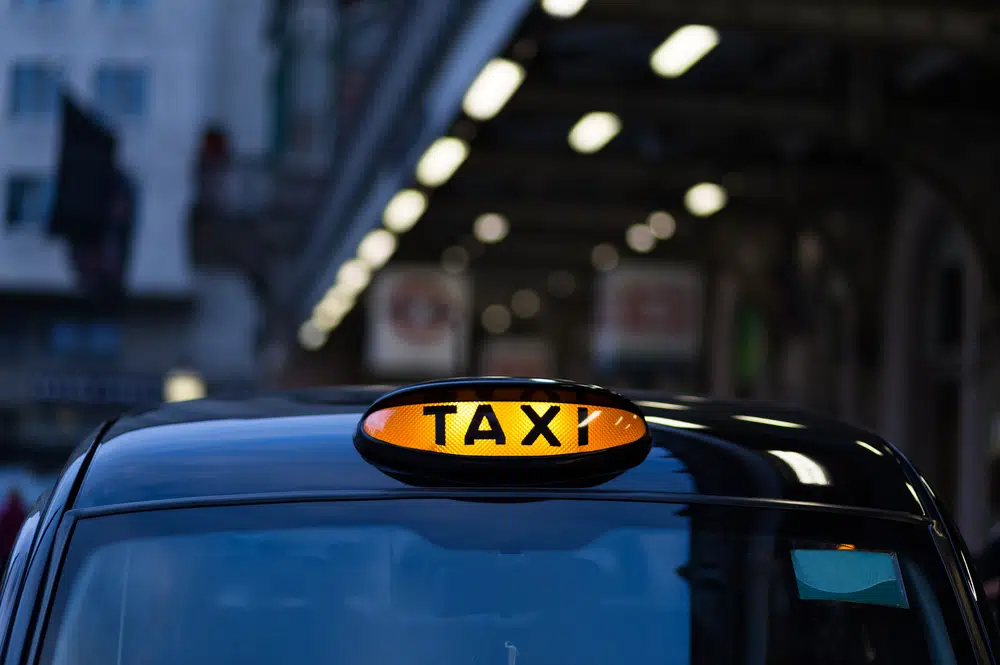
First and foremost, you need to get licensed, which is a multi-step process that involves applying to your local council for a private hire vehicle (PHV) operator license. This process typically includes various checks, including proof of suitable premises and thorough DBS checks for you and your drivers.
In addition, you will need to insure your vehicles for hire and reward, and each of your drivers will also need a private hire driver license.
Creating a business plan is a crucial step that can’t be skipped. This includes evaluating local competition, identifying your target audience, pricing strategy, and marketing approach.
Getting the right vehicles that offer comfort, safety, and fuel efficiency is also a critical consideration. Lastly, setting up an efficient booking and dispatch system is important for the smooth running of your taxi firm.
This could be through a call centre or increasingly popular are digital platforms that allow customers to book and track their ride from a smartphone app. Compliance with regulations, solid planning, and good customer service are the foundations of a successful taxi firm in the UK.
To learn more about starting and running a taxi business, read through our useful guide below.
Research your target market
It’s very important to figure out how well those services are already being provided before planning your taxi business.
Estimating demand
Several areas of the country are highly competitive when it comes to taxis. Licensed hackney carriages can accept hirings from people hailing them on the street and can also wait on taxi ranks for customers. In overcrowded taxi ranks, you will have to cruise until you get a fare, and if your local taxi ranks are overcrowded, you can’t just park anywhere. Fuel can be consumed in this way. The following will be your competitors:
- Besides hackney carriages, minicabs and private hire vehicles are also available
- A minibus offered to transport passengers to a local airport is an example of a public service vehicle
- Free supermarket shuttles
- Public transportation systems in local areas
- Bicycle rickshaws, or pedicabs
- For getting around a city, car clubs allow members to hire a car on a short-term basis
- As a result of Boris Johnson’s tenure as Mayor of London when the scheme was launched, Santander Cycles (known as ‘Boris bikes’), the London public cycle hire scheme (and similar schemes in other cities and towns) – they aren’t for everyone, but they are very popular, and some people use them instead of taxis.
Checking out the competition is a good first step. Does your area already have a taxi or private hire business? How are the bus services in your area? Do you offer airport transportation services? Do local taxi ranks seem crowded? Check whether your local licensing authority restricts the issuance of new taxi licenses if you live outside London to limit the number of hackney cabs operating there.
In some local authorities, there is a limit on numbers, while in others, there is no limit at all, and it is up to the market. In addition, find out if your local authority plans to introduce such a restriction if it doesn’t already.
Competitors are finding new opportunities as a result of technology. Minicab drivers, particularly those operating in London, face growing competition from licensed hackney cab drivers who provide services similar to hackney cabs without breaking the law. Nearly 70% of licensed cabs in England are now minicabs or private hire vehicles.
In November 2019, Uber lost its license to operate in London (for the second time). However, it has appealed the decision and is continuing to operate. In the meantime, they will continue to operate in London for at least a few years.
Finding a niche market
Perhaps you can offer a service that isn’t currently available. During the early morning hours when the clubs close, you might notice that there aren’t enough taxis available. If you live in a remote area, you might be able to negotiate a regular contract to transport children to and from school.
Write a taxi service business plan
You maybe wondering if your taxi business venture maybe viable and profitable. Compiling a business plan might not be top of your priority list. However, it’s a good way to out whether starting a taxi business as an option for you to progress with.
Your business plan should answer the following questions:
- What type of service will you be offering – i.e. taxi or private hire?
- What hours you can work?
- What equipment is needed and other outgoings to budget for?
- Starting with one vehicle or operating a fleet?
- If you plan to operate a fleet, what is the balance between the extra costs and potential for additional income that comes with managing multiple car
Make sure to draw up a thorough business plan, detailing:
- The market you’re entering
- Expected startup and running costs (e.g. buying a cab, GPS software, radio equipment, and petrol – fuel cards costs)
- Your potential earnings (how much will you charge for fares to ensure profitability?)
Your working day
Estimating the typical journey length would be an important part of your market research. Distances between shopping centres or train stations and residential suburbs, or distances between the airport and city centre, can be measured. You will be able to determine how much fuel your typical journey will consume based on the length of your journey.
As a result, you will be able to calculate how many journeys you can complete in a typical shift by estimating how long it will take.
The fare tariffs
There will be regular checks on your taxi meter by your licensing authority.
The licensing authority sets the fares in London and most other parts of the country. Generally, the tariff includes:
- An initial charge
- Further amounts reflecting either the distance travelled, or waiting time
A surcharge is usually added to the fare if there are more passengers or luggage, if the cab is soiling or if the trip takes place at night, on a weekend, or on a public holiday. There may be more than one tariff depending on the time of day or night.
License authorities in other parts of the country may not increase the tariff every year as they do in London. As a result, your margins will be squeezed if fuel and licence prices go up significantly since you can’t charge your customers anymore. Find out how much a typical fare will earn you by obtaining a copy of the local fare table and planning accordingly. Taxi tariffs are displayed on the websites of many licensing authorities. A regular review of taxi tariffs around the country is published in the Private Hire and Taxi Monthly online journal.
Establish your customer profiles
In addition to picking up customers who hail you in the street, as a licensed taxi driver you will be able to work off a rank as well, so you will likely serve the following population segments:
- Commuters
- Shoppers
- Tourists
- Travellers
- Businesspeople travelling during the day
- Students particularly for late work after pub and nightclub closing times
- Other people going out in the evenings
Cash work is when you are paid at the end of your journey. You may receive a tip from some of these customers.
You may receive some bookings over the radio if you subscribe to a radio circuit. There are two types of customers: cash customers and account customers. Radio agencies usually collect money due from account customers and send it to you less any fees they charge. In general, taxi app networks work the same way.
Some of your customers might be account customers, like local businesses, who you invoice yourself.
If documents need to be delivered that day, perhaps you can offer a local delivery/courier service. The work is sometimes referred to as ‘unaccompanied delivery’. It is also possible that you will do some takeaway delivery work, sometimes at a discounted rate if restaurants that need food delivered refer you for the job.
Busy times
Generally, Friday and Saturday nights are the busiest times of the week for taxi firms, but your location and preferred hours may affect demand to some extent. There are some areas that become extremely busy during the summer months due to a high number of tourists, while there are other areas that have an even distribution of demand throughout the year.
Decide which services to offer
People working in the taxi industry provide a variety of services. Think about how you will operate your business.
Providing driver-only services
Drivers who do not own their own vehicles may pay a fee to drive someone else’s vehicle.
Ideally, we should find out:
- If there are licensed taxi vehicle owners seeking drivers
- What shifts and days are available
- What is included in the fee. A fixed weekly rent might be paid, and all takings are kept, or you might only keep a proportion of your takings plus tips. Fuel costs and vehicle maintenance should be explained to you who is responsible for them
If you see an advertisement in a trade journal or local newspaper, you may be able to contact vehicle owners. The level of income you can expect can also be determined by experienced owners.
Operating as an owner-driver
An owner-driver business may be right for you. Licenses are required for both you and your vehicle.
If you decide to hire out your vehicle to another driver (who must be licensed as well), you might want to consider the cost.
Insurance
Insurance for taxi drivers is not just a legal necessity but also a critical aspect of running a safe, responsible, and successful taxi business. While basic vehicle insurance is mandatory for all motorists in the UK, taxi drivers need specific types of insurance due to the nature of their job, which often involves long hours on the road and transporting passengers.
The right insurance policy not only shields taxi drivers from potential financial losses arising from accidents, theft, or damage, but also covers liability towards passengers and other road users. Thus, having a comprehensive insurance plan is vital to protect the driver, passengers, and the business itself.
The necessity for specific insurance coverages for taxi drivers stems from the unique nature of their job and the potential risks involved. Here are some key types of insurance and examples of when they might be needed:
- Public Liability Insurance: This covers legal costs and compensation claims if a third party is injured or their property is damaged. For instance, if a passenger gets injured while getting out of the taxi or a passerby’s property is damaged due to an accident involving the taxi, this insurance will cover the associated costs.
- Hire and Reward Insurance: This type of insurance is specifically designed for vehicles that carry passengers for hire or reward. It protects the taxi against theft, accidents, and damages. For example, if the taxi is stolen or damaged in a road accident, this insurance will cover the repair or replacement costs. Furthermore, it also protects the driver in case a passenger fails to pay the fare.
- Personal Accident Insurance: This insurance offers compensation if the driver suffers serious injury or dies as a result of an accident. For instance, if a taxi driver gets severely injured in a traffic collision and is unable to work for several months, this insurance can help cover their living costs during the recovery period. In the unfortunate event of the driver’s death, it would provide financial support to the driver’s family.
These coverages offer a safety net for taxi drivers, allowing them to focus on their job without worrying about the financial implications of potential accidents or mishaps.
When choosing an insurance provider, taxi drivers have several reputable options:
- The Insurance Factory: Known for its tailored coverage options, The Insurance Factory offers a variety of policies to meet different drivers’ needs. They provide comprehensive coverage and more specific policies depending on a driver’s unique requirements.
- Cover My Cab: Specialising in both public and private hire taxi insurance, Cover My Cab understands the unique challenges that taxi drivers face and structures their offerings accordingly. They provide a range of policies to cover different potential liabilities and risks associated with driving taxis.
- Staveley Head: Offering a range of insurance options from public liability to vehicle breakdown coverage, Staveley Head allows taxi drivers to select the coverage they need for their unique situation. They are known for their comprehensive offerings and customer-centric policies.
Each of these companies provides comprehensive insurance packages that cater to a variety of needs for taxi drivers. It’s important to compare their offerings and choose the most suitable one based on individual circumstances and requirements.
Subscribing to a radio circuit or taxi app network
A radio circuit might be of interest to you. Bookings are provided over the radio for a fee. Your workflow can be steady as a result. A taxi app network might also be of interest to you. The app allows people to call a black cab using their smartphones. Instead of paying a weekly or monthly fee, you pay commission for each fare you accept on your own smartphone.
Other services
Depending on the type of vehicle you have available, you can also offer other services in addition to carrying fare-paying passengers on short journeys. The following may be included:
- Chauffeur services – pre-booked car with driver for a specific job
- Airport transfers
- Minibus services
- Unaccompanied delivery services and same-day local courier services
Image
You should take care of your appearance as well as your vehicle. The majority of customers prefer to hire drivers who are smartly dressed and who provide professional service. Maintaining a good condition of your cab will also be required by your licensing authority.
You can list the services you offer on your own website. You might want to include information about your area and links to nearby hotels and attractions.
Handling the cash
You will receive most of your payments in cash from your customers, so you will need a secure money bag in which to store it. It’s important to consider how you will protect yourself and your takings from violent theft since taxi drivers can be the victims of violent theft
Card machines
In 2023 taxi drivers can no longer just rely on taking cash payments from passengers. As physical money continues to lose ground to the cashless economy, there could be a risk you may lose out on fares if you don’t accept card payments.
Since October 2016, London taxis have been required to accept card payments and provide printed receipts. Should it be a requirement for you to operate in the capital, there is a requirement for you to install a TfL-approved card payment device in the passenger compartment.
You compare your options in our guide to taxi card payment systems as well as learning more about payment solutions for the industry.
Financing your taxi or private hire business
When starting our licences, cars, equipment are just some of the items you’ll need to budget for when running a taxi service.
If you are thinking about financing a business, there are a number of options you can use from, using your savings, or borrowing money from family members. There are also a number of alternatives available to you. For instance, you can consider a small business loan, or using asset finance from a specialist taxi provider to finance a vehicle.
Once up and running, the finances of the business need to be managed correctly. Ideally, you should separate your business income from your personal income, this can be done by use of a business bank account to manage earnings and outgoings for your business specifically. If your preferred company start up structure is a limited company, you must have a business bank account
Useful links
Here is a list of Here, we offer a helpful list of helpful sources for reference.
- LEVC black taxis
- TfL taxi driver licence application
- TfL private hire licence application
- Operator licence in London
- Operator licence outside of London
- TfL card payments
- Ofcom business radio
Conclusion
Starting your own taxi business in the UK is a significant venture that requires careful planning, a solid understanding of local regulations, and a comprehensive risk management approach. From securing the necessary licenses to purchasing the right vehicles and implementing an efficient booking system, there are many components to consider.
An integral part of this journey is obtaining appropriate insurance coverage. With providers such as The Insurance Factory, Cover My Cab, and Staveley Head, taxi drivers have access to various insurance options tailored to their unique needs. Policies such as Public Liability Insurance, Hire and Reward Insurance, and Personal Accident Insurance offer necessary protection and peace of mind for both the drivers and passengers.
By taking the time to thoroughly plan and execute each step, and being prepared for potential challenges, aspiring taxi business owners can build a successful enterprise in the UK’s competitive taxi industry.
Jarred Musson is a versatile writer with a diverse educational background and a passion for all things business. Holding a Master of Science (MSc) degree in Marketing and a Bachelor of Arts (BA Hons) in Multimedia Journalism from Manchester Metropolitan University, Jarred possesses a unique blend of expertise that allows him to dissect and communicate complex business topics with clarity and precision.


